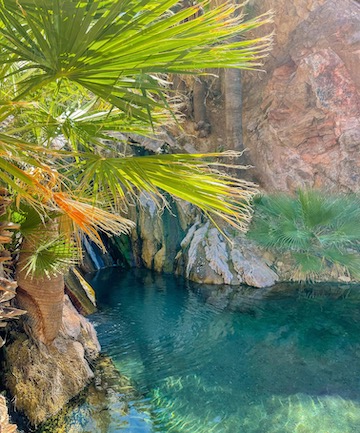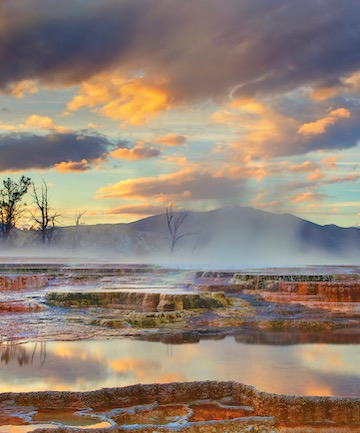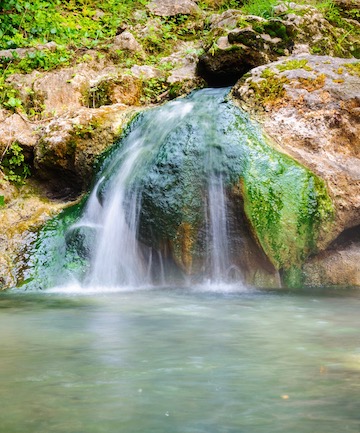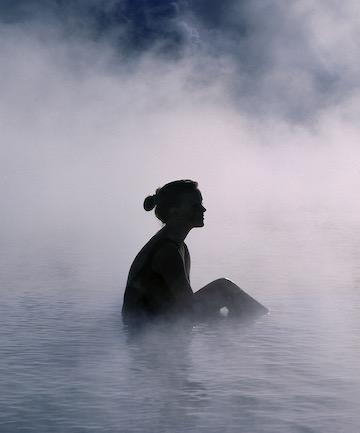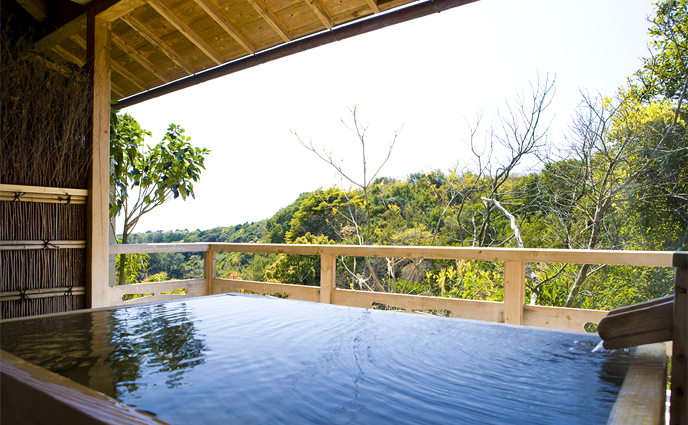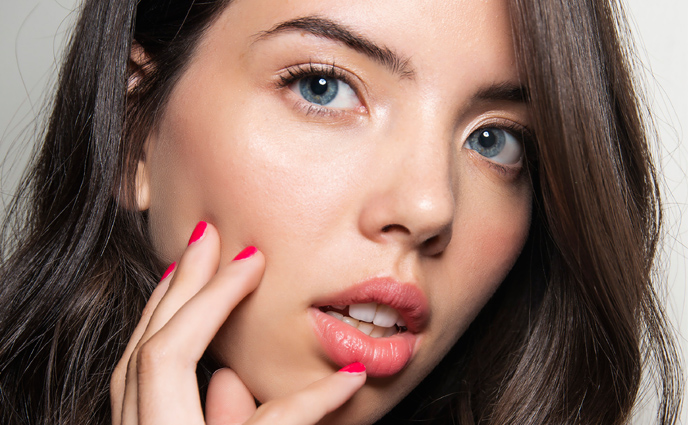Surrounded by rocky formations, cool cacti and palm trees with wind gently sweeping through their fronds, I carefully dipped my big toe into the thermal water below me. The scenery is always different. Maybe I'm mountainside in an abandoned, mossy spring in Iceland or enjoying the atmosphere just outside Yellowstone National Park, but that "first dip" feeling is always a welcome one.
Recently, I was happily engulfed in a natural warm bath courtesy of a 125-year-old desert oasis at the luxurious Castle Hot Springs just outside of Wickenburg, Arizona. Always eager to melt away in the next geothermal pool, this spot had been on my list since it was rebuilt in the mid-2010s.
My time in these scenic springs got me thinking. I've always appreciated the mental health benefits of getting as close to nature as possible, but were there any physical benefits associated with these mineral-rich pools?
For the answers, I reached out to an internist and an esthetician.
Image via Wendy Rose Gould
The actual physical makeup of every hot spring is different, but Dr. Sunitha Posina, a board certified internist based in New York City, says that most contain a rich assortment of minerals. These include calcium, silica, sulfur, lithium, magnesium, iron, zinc and potassium.
Image via Kevin McNeal/Getty Images
"Some minerals particularly have been associated with helping skin conditions, such as selenium and silica, in conditions like psoriasis and eczema," says Posina. "A study done in La Roche-Posay, France for patients with psoriasis showed improvement in the condition with a three-week balneotherapy [medicinal bathing] believed due to its rich selenium content."
Heather Nicole, a celebrity master esthetician, says that the high concentrations of sulfur in some hot springs (you know the smell!) can also be beneficial regarding the above skin conditions. "These higher amounts of sulfur ease itching or inflammation that is linked to psoriasis and eczema," she explains.
Of course, hot springs aren't replacement therapies for skin conditions.
Image via Alla Lavrenchuk / EyeEm/Getty Images
In the same way a heating pad can provide relief, the warmth from hot springs can help ease pain.
"Heat overall decreases your perception of pain when in moderation by blocking the pain receptors," explains Posina. "A study in Rheumatology International suggested that hot springs may help with pain relief, especially [in cases of] diffuse body pain or fibromyalgia. Another study showed that it helped patients with inflammatory arthritis."
Nicole adds that in Europe medicinal bathing is considered a form of health care to the end that it's actually covered by some health insurance plans. Courses on the subject are even offered at medical institutions.
Image via zrfphoto/Getty Images
"It is known that hot springs usually have certain minerals, as mentioned above, and that some of them are believed to increase blood circulation," says Posina.
Nicole adds that "most hot springs contain calcium and sodium bicarbonate which are absorbed through your skin. This helps to oxygenate the blood leading to better circulation."
Image via Arctic-Images/Getty Images


